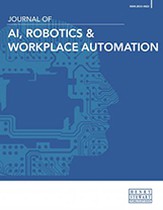From form to function and appeal: Increasing workplace adoption of AI through a functional framework and persona-based approach
Abstract
Traditional methods of developing and implementing artificial intelligence (AI) inhibit widespread workplace adoption, because the development of AI has focused on advancing existing, and discovering new, technologies rather than solving industry problems. This paper discusses how, to create scalable and sustainable AI adoption, form must follow function, rather than function being driven by form. This requires a new framework for understanding AI that focuses on the function of the solution rather than the form of the technology. A functional framework for AI categorises solutions by human impact on tasks and decisions: automating AI eliminates human effort; augmenting AI improves human efficacy; accelerating AI transforms systems to increase human efficiency. A human-centred understanding of AI facilitates a persona-based approach to implementation and adoption. Robust personas of target end users can be created by understanding their preferred learning styles using Kolb’s experiential learning theory (KELT) and identifying the elements of motivation that empower them to change using the theory of planned behaviour (TPB). Layering KELT and TPB on top of the functional AI framework allows for the creation of a significance matrix to understand natural synergy or discord that exists between AI solutions and target end users. In addition to the significance matrix, personas must identify and define value for target end users, which combines with other elements to create appeal. Appeal can be leveraged to create scalable implementation and adoption plans that function across industries and exploit natural synergies. Healthcare industry examples are provided to demonstrate the overlay of the functional AI framework with KELT and TPB, along with persona-defined value, to drive adoption. Strategies for mitigating discordance between AI solutions and end users, and increasing appeal, are described.
The full article is available to subscribers to the journal.
Author's Biography
John W. Showalter , MD, MSIS is an award-winning executive and educator. He is board certified in internal medicine and clinical informatics, serves as the chief product officer for Jvion, Inc., a clinical artificial intelligence company, and develops the next generation of healthcare leaders as an adjunct professor of predictive analytics at the George Washington University, Department of Health Policy and Management.
Grace L. Showalter , MHIIM, BSN, RN is a clinician thought leader and educator specialising in evidence-based and data-driven healthcare strategy. She helps healthcare stakeholders tackle their biggest challenges by immersing them in the story of healthcare that equips clinicians to transform. Her work leading COVID-19 population health response efforts and leveraging telemedicine in Medicare has been nationally recognised. She is the director of clinical transformation for AccentCare, Inc.
